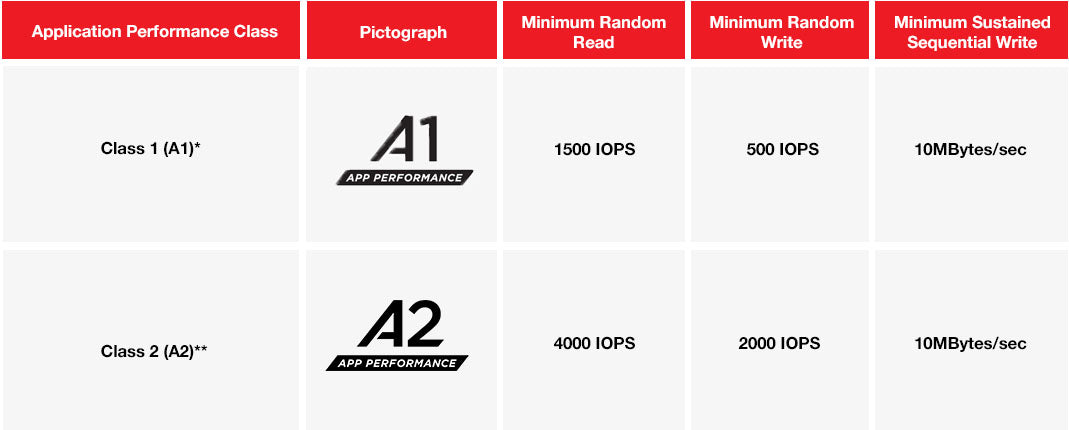The first-time Application Performance Class of speed classification specification is included in the SD 5.1 version specification, generally referred to as A1. The specification requires that the random access performance of the memory card must reach 1500IOPS for reading and 500IOPS for writing, and the sequential access speed requirement is only 10MB/s, relatively slow.
A2's requirement for IOPS is a multiple of A1. The random read speed must be up to 4000IOPS, and the write is 2000IOPS, which requires more times. That is to say, the write speed of A2 is higher than the read requirement of A1. As for the sequential access speed requirements, it is the same 10MB/s. SDA has not made adjustments to this part, but this is a nothing compared to the IOPS requirements of A1 and A2.
In order to achieve higher IOPS requirements, A2 uses Command Queue. In addition to improving random read performance, its architecture also allows multiple access commands to be processed at the same time, or to assign new tasks during access. This concept is just like the communication layer difference between the previous PATA and SATA hard disks, or the current AHCI and NVMe solid state hard disks, with more efficient access modes to improve the read and even write speed performance.
The latest SD specification also supports 1.8V Low Voltage Signalin (LVS) operation mode, which provides higher access performance and also has energy-saving features. A2 is also supported. Typical SD products are Drive based on 3.3V voltage. LVS also has an exclusive identification mark. SD memory cards that comply with the LVS specification can operate on LVS and old 3.3V devices, but the new LVS devices are not backward compatible.
SD 6.0 standard
Not only smart phones’ requirements for memory cards are rising, other smart terminal devices also require better memory card performance. During the CP+ Camera and Photo Imaging Show 2017, SDA announced the official release of the SD 6.0 specification. Brings the UHS-III bus interface, and the bandwidth is doubled from 312MB/s of UHS-II to 624MB/s. This is nothing more than to meet the needs of 8K/4K ultra-high-quality recording, as well as 360-degree cameras and other professional applications that require high-speed storage media.
SD 6.0 inherits the usual structure and electrical compatibility. The size of SD card and microSD card remains unchanged. The file system format depends on the product capacity. It is also divided into SDHC (32GB and below capacity) and SDXC (64GB and above capacity) Two kinds. The signal pins are compatible with UHS-II, but the memory card and device must support the same version of the specification to achieve the best read and write speed.
P.S. The upper limit of Switch reading is about 100MB/s, which happens to be A1 standard, and 170MB/s of A2 would be limited. So A1 or A2 depends on your device's reading limit.

